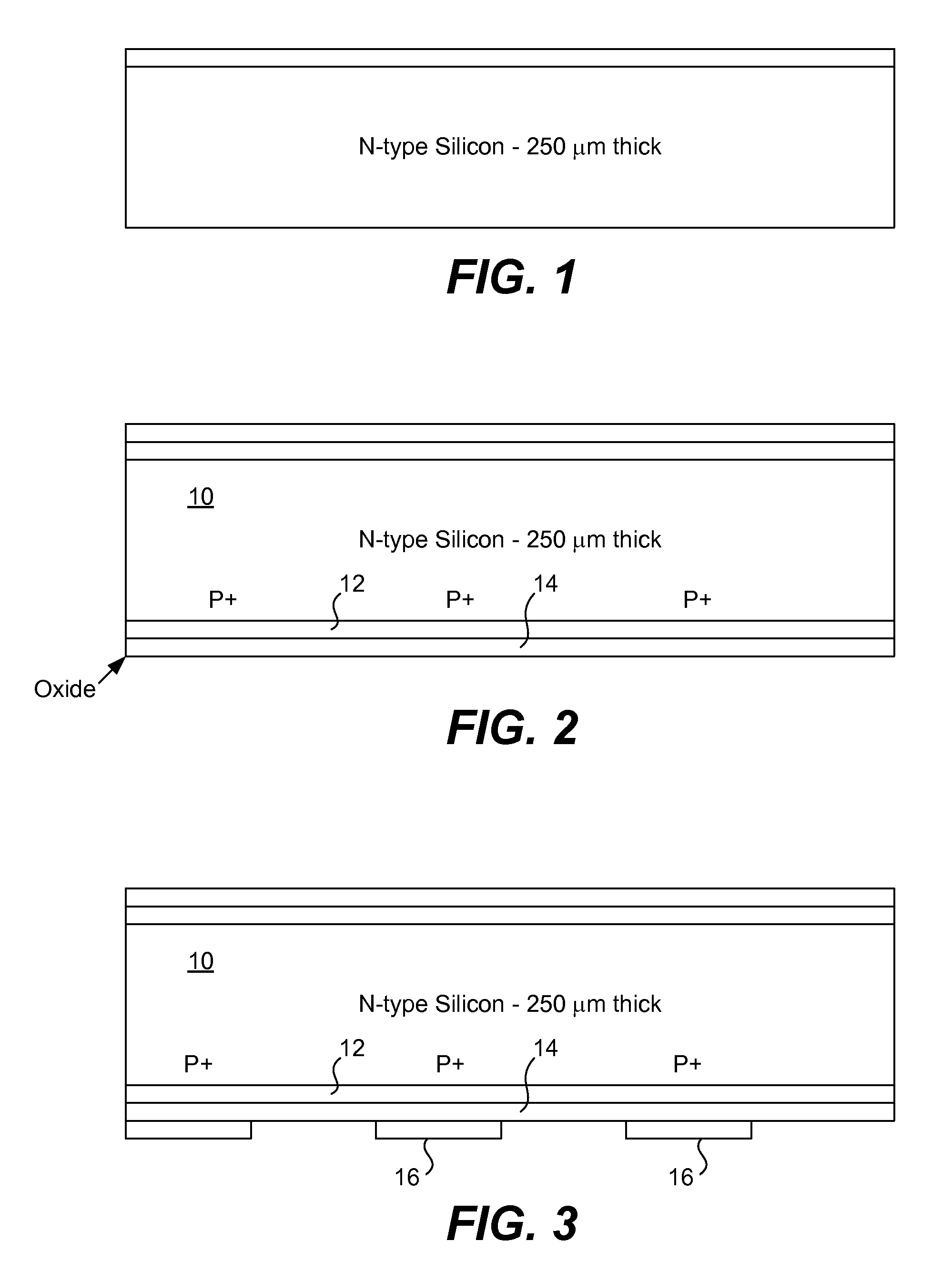Method of manufacturing solar cell
a manufacturing method and solar cell technology, applied in the field of solar cell structure, can solve the problems of limiting the efficiency of silicon photovoltaic cells in directly converting solar energy to electricity to less than 30%, preventing the commercialization of ibc solar cells, and the process is not cost effective for conventional low-cost flat-plate solar panels, etc., to achieve the effect of less expensive and convenient manufacturing
- Summary
- Abstract
- Description
- Claims
- Application Information
AI Technical Summary
Benefits of technology
Problems solved by technology
Method used
Image
Examples
Embodiment Construction
[0014]A solar cell in accordance with the invention is preferably manufactured in a single crystalline silicon substrate having a (100) crystalline orientation or in a multi-crystalline silicon substrate with minority carrier lifetime greater than 200 microseconds. FIG. 1 is a side view in section of such a wafer 10 which is doped n-type in the resistivity range of 1-20 ohm / cm and with a thickness of approximately 200 μm. The first step of the process is caustic etching of the wafer using KOH or NaOH to remove solid damage from ingot wafering. Typically, 20-50 μm of silicon are removed. After the caustic etch, the wafers are cleaned using a standard pre-diffusion, wet cleaning sequence.
[0015]Next, as shown in FIG. 2, the wafer is blanket-diffused on both sides in diffusion boats in a high temperature diffusion furnace. In a preferred embodiment, a liquid boron dopant source (BBr3) is used and a dopant drive forms a p+ layer 12. The dopant drive is followed by growth of a thermal sil...
PUM
 Login to View More
Login to View More Abstract
Description
Claims
Application Information
 Login to View More
Login to View More - R&D
- Intellectual Property
- Life Sciences
- Materials
- Tech Scout
- Unparalleled Data Quality
- Higher Quality Content
- 60% Fewer Hallucinations
Browse by: Latest US Patents, China's latest patents, Technical Efficacy Thesaurus, Application Domain, Technology Topic, Popular Technical Reports.
© 2025 PatSnap. All rights reserved.Legal|Privacy policy|Modern Slavery Act Transparency Statement|Sitemap|About US| Contact US: help@patsnap.com



